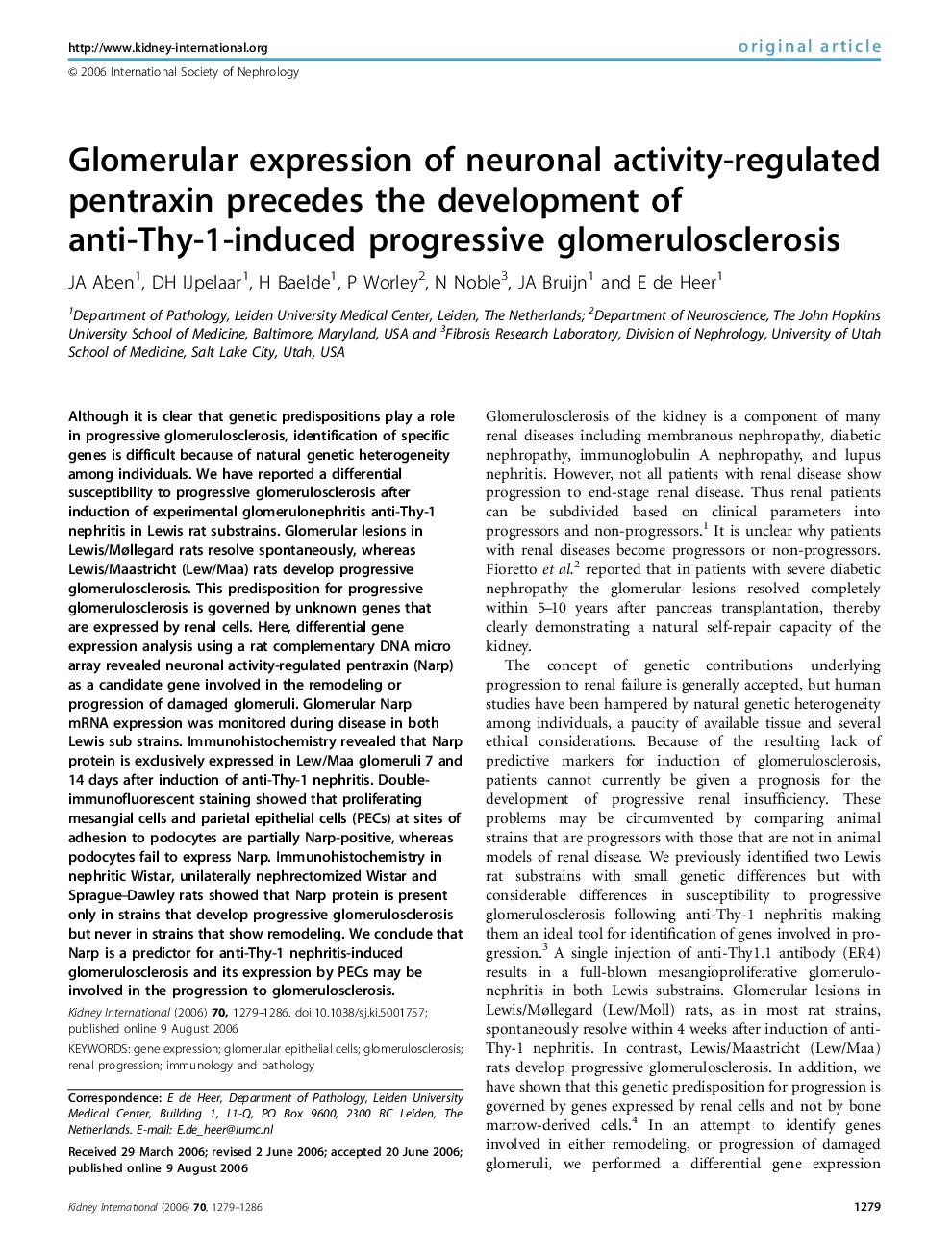| Article ID | Journal | Published Year | Pages | File Type |
|---|---|---|---|---|
| 3885212 | Kidney International | 2006 | 8 Pages |
Although it is clear that genetic predispositions play a role in progressive glomerulosclerosis, identification of specific genes is difficult because of natural genetic heterogeneity among individuals. We have reported a differential susceptibility to progressive glomerulosclerosis after induction of experimental glomerulonephritis anti-Thy-1 nephritis in Lewis rat substrains. Glomerular lesions in Lewis/Møllegard rats resolve spontaneously, whereas Lewis/Maastricht (Lew/Maa) rats develop progressive glomerulosclerosis. This predisposition for progressive glomerulosclerosis is governed by unknown genes that are expressed by renal cells. Here, differential gene expression analysis using a rat complementary DNA micro array revealed neuronal activity-regulated pentraxin (Narp) as a candidate gene involved in the remodeling or progression of damaged glomeruli. Glomerular Narp mRNA expression was monitored during disease in both Lewis sub strains. Immunohistochemistry revealed that Narp protein is exclusively expressed in Lew/Maa glomeruli 7 and 14 days after induction of anti-Thy-1 nephritis. Double-immunofluorescent staining showed that proliferating mesangial cells and parietal epithelial cells (PECs) at sites of adhesion to podocytes are partially Narp-positive, whereas podocytes fail to express Narp. Immunohistochemistry in nephritic Wistar, unilaterally nephrectomized Wistar and Sprague–Dawley rats showed that Narp protein is present only in strains that develop progressive glomerulosclerosis but never in strains that show remodeling. We conclude that Narp is a predictor for anti-Thy-1 nephritis-induced glomerulosclerosis and its expression by PECs may be involved in the progression to glomerulosclerosis.
